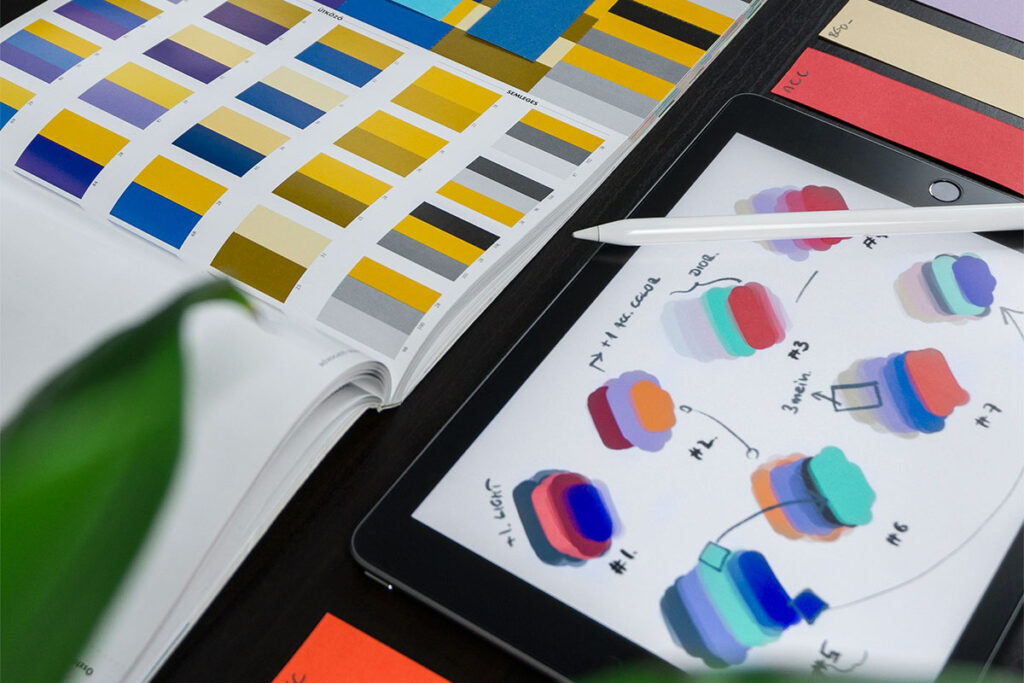Lightning Fast Turnaround!

Sticker design plays a crucial role in marketing strategies, serving as a powerful tool to capture attention and communicate brand messages. These small yet impactful visuals can:
Understanding the psychology behind sticker design elements such as colors and shapes is essential if you’re planning on utilizing Austin sticker printing services. Each element carries specific meanings that resonate differently with consumers. For instance, vibrant colors can evoke excitement, while certain shapes may foster a sense of community, so it’s important to carefully plan your custom stickers in Austin to capture your brand and message.
Recognizing how color and shape psychology influences customer behavior can significantly enhance the effectiveness of marketing campaigns. By leveraging these insights, brands can craft compelling sticker designs that not only attract attention but also drive engagement and sales.
Stickers offer unique advantages that can elevate brand visibility and recognition. Their visual appeal captures attention, making them an effective marketing tool. Key benefits include:
Stickers thrive in guerilla marketing strategies, creating buzz around products or services. Techniques such as sticker bombing or stealth marketing tap into urban environments, sparking curiosity and engagement. This unconventional approach fosters organic conversations about the brand.
Emotional triggers play a crucial role in sticker designs. Colors, shapes, and imagery evoke feelings that resonate with consumers. For instance:
Color psychology plays a crucial role in sticker design. Different colors evoke specific emotions and messages that can influence consumer behavior significantly.
Here are some common associations with different colors:
Cultural meanings of colors also vary widely. For instance, while white represents purity in Western cultures, it may signify mourning in some Asian cultures. Understanding these nuances is essential when designing stickers for diverse target audiences.
Incorporating color psychology into sticker design not only enhances brand visibility but also ensures that the emotional impact aligns with the intended message. Selecting the right colors can lead to stronger connections with consumers, influencing their purchasing decisions effectively.
Shapes are a key element in sticker design, influencing how consumers perceive and respond to them. Each shape has its own impact:
By using shapes intentionally, brands can strengthen their identity and connect with specific customer groups. For example:
When designing stickers, it’s crucial to consider the shapes you incorporate. The right shapes can:
Understanding the psychology behind shapes empowers you to create designs that speak directly to your audience. Stickers become more than just promotional tools; they evolve into powerful visual statements that effectively influence consumer behavior.
Implementing effective sticker strategies requires aligning them with your brand values and understanding your target audience. Consider these tips:
Strategic distribution of stickers also plays a crucial role in maximizing reach and engagement:
The evolution of stickers in advertising showcases a remarkable journey from simple promotional tools to dynamic marketing assets. Key milestones include:
Understanding the psychology of sticker design is crucial for brands aiming to enhance their marketing efforts. Here are key insights on how to effectively leverage color and shape psychology:
Implementing these strategies to utilize Austin custom labels and stickers will enable brands to create compelling sticker designs. These designs not only attract attention but also drive desired behaviors among customers, enhancing overall marketing effectiveness. The insights gleaned from sticker psychology can lead to successful campaigns that resonate deeply with audiences.
Sticker design plays a crucial role in marketing strategies as it can significantly influence customer behavior. By understanding the psychology behind colors and shapes used in stickers, brands can create compelling designs that resonate with their target audiences and drive successful marketing campaigns.
Stickers are advantageous for brand visibility and recognition, making them effective guerilla marketing tools. They create a buzz around products or services by being easily shareable and visually appealing, often sparking conversations and encouraging consumer engagement.
Different colors evoke specific emotions and messages in marketing contexts. For instance, red can convey urgency, while blue often represents trust. Understanding these psychological associations helps in designing stickers that effectively communicate with diverse target audiences.
Shapes have psychological effects on consumer perception. For example, circles can evoke a sense of community, while triangles may suggest dynamism. Utilizing shapes strategically enhances brand identity and appeals to specific customer segments.
Implementing impactful sticker marketing strategies involves aligning designs with brand values and understanding target audience preferences. Innovative distribution methods, such as placing stickers in high-traffic areas or partnering with influencers, can maximize reach and engagement.
The evolution of stickers in advertising includes key milestones from traditional paper-based formats to digital versions. The rise of GIF stickers on social media platforms highlights this transition, showcasing how brands adapt to changing consumer behaviors and technological advancements.
|
Uploaded
Failed
|
 |